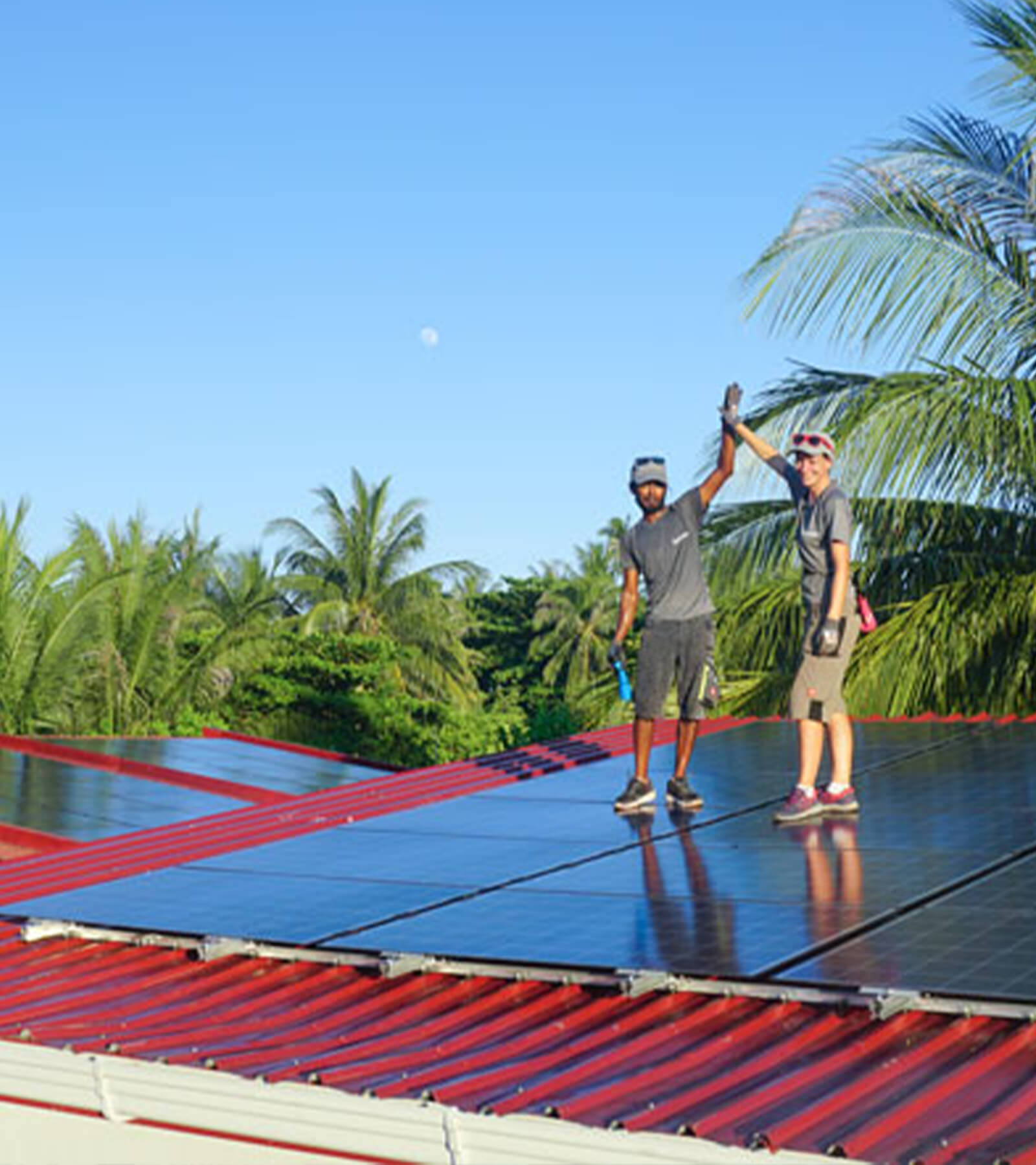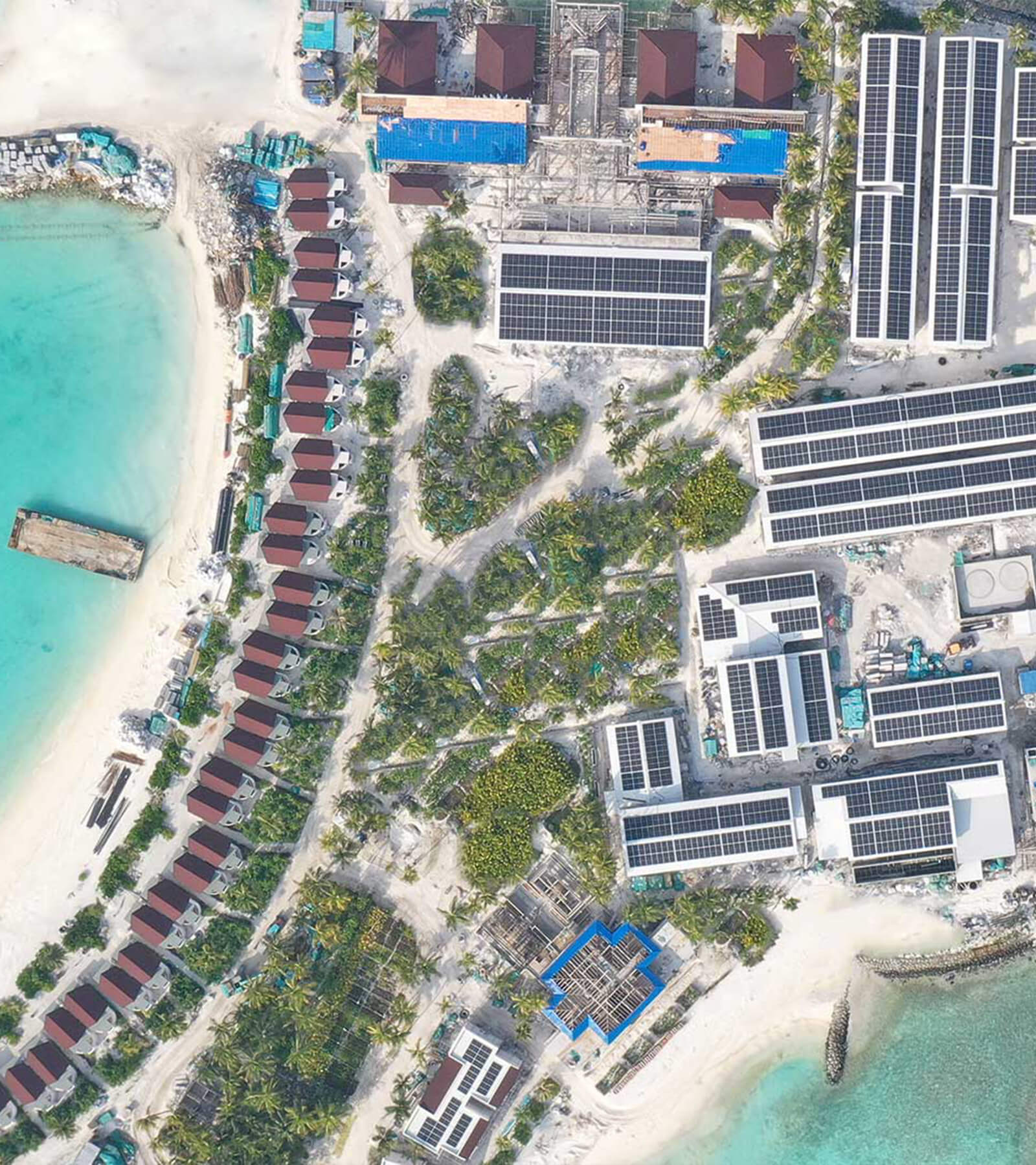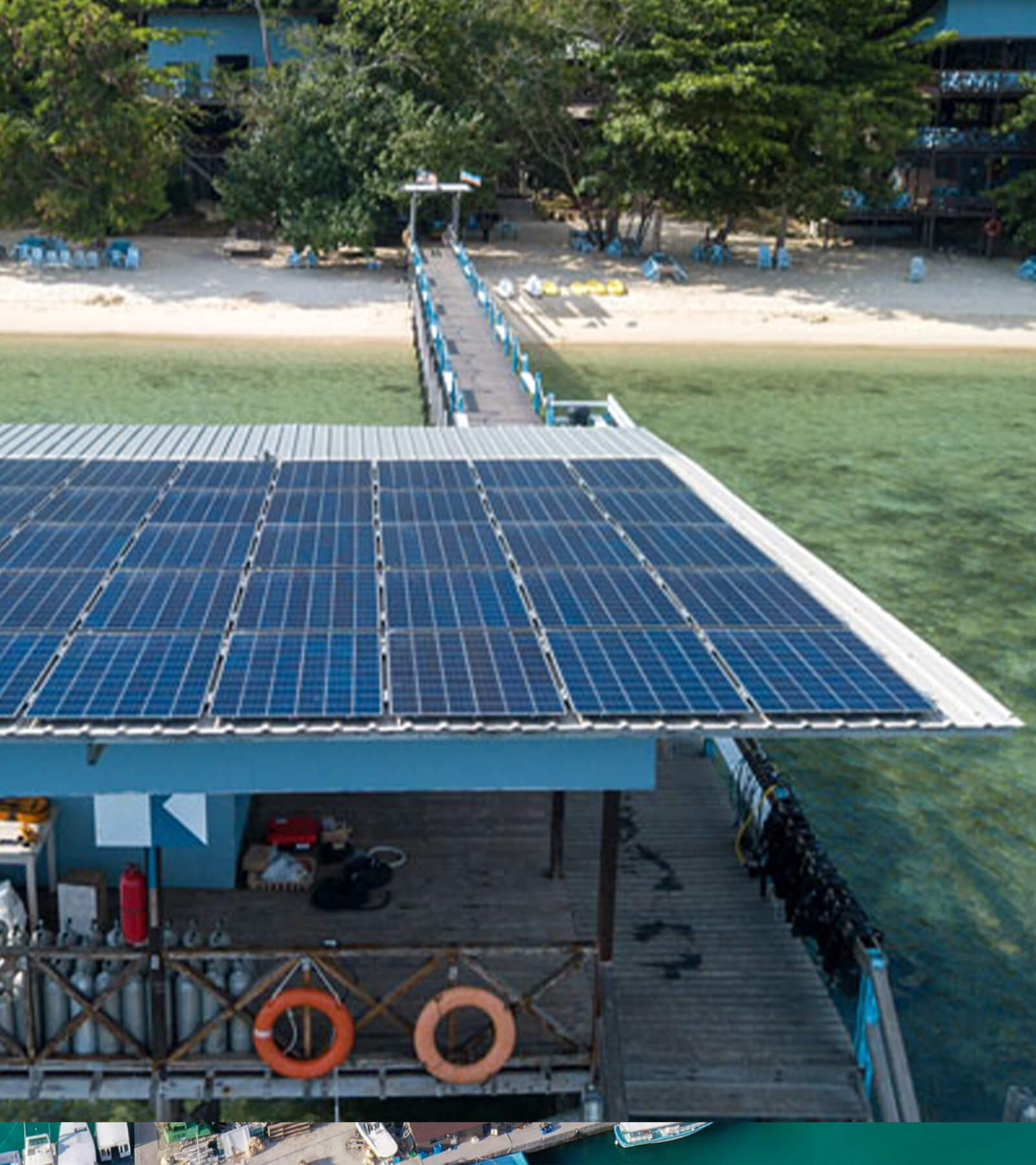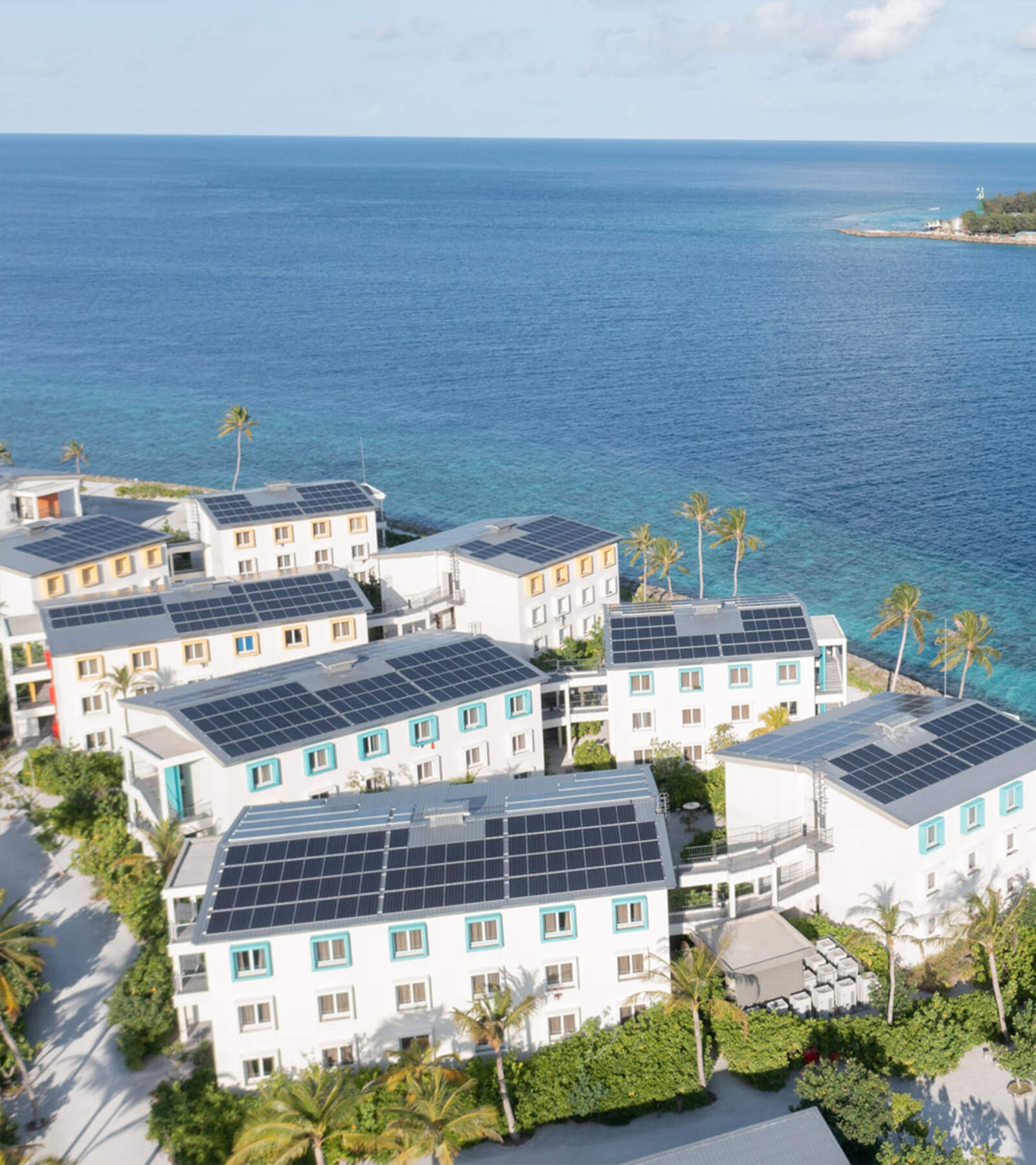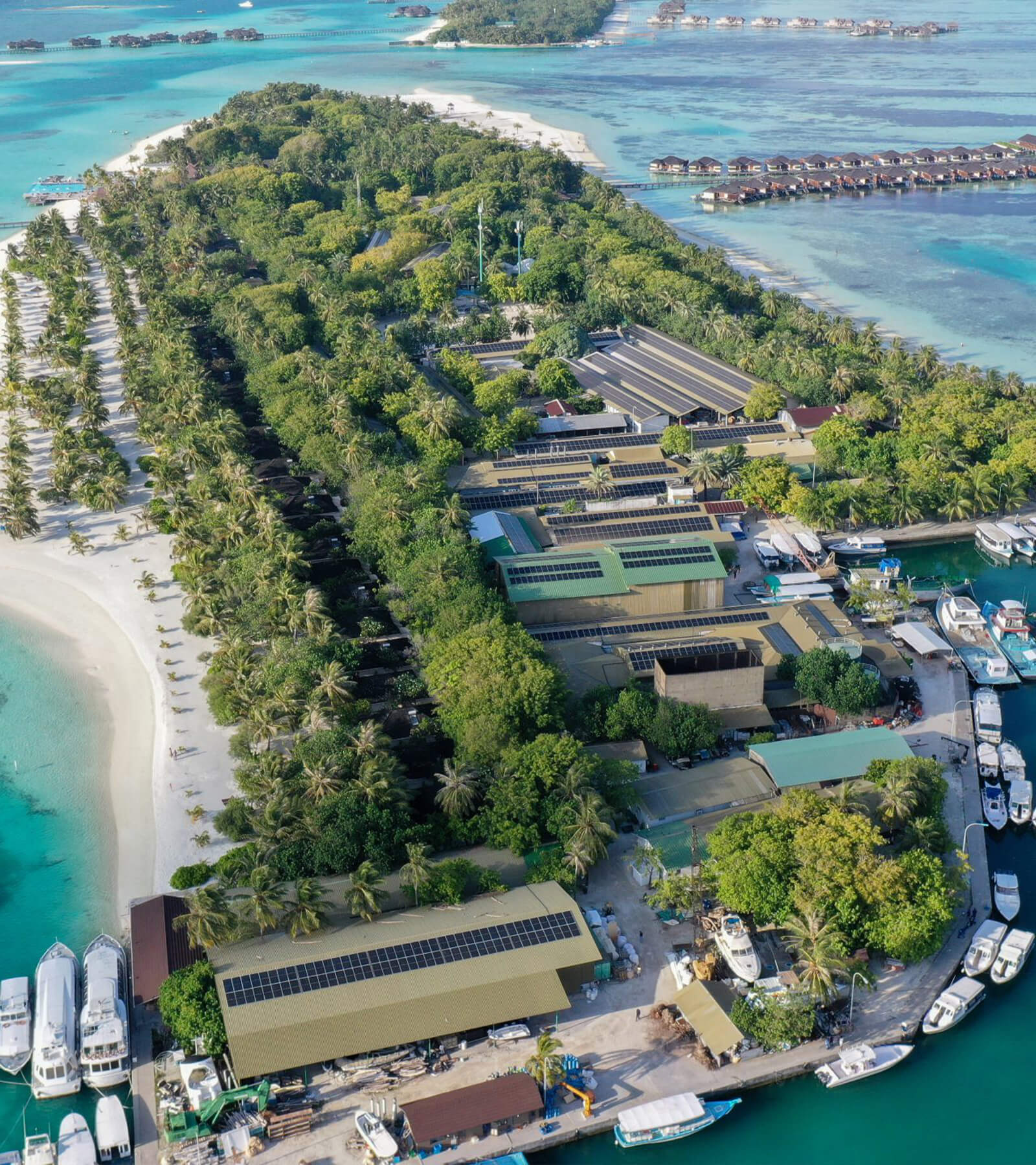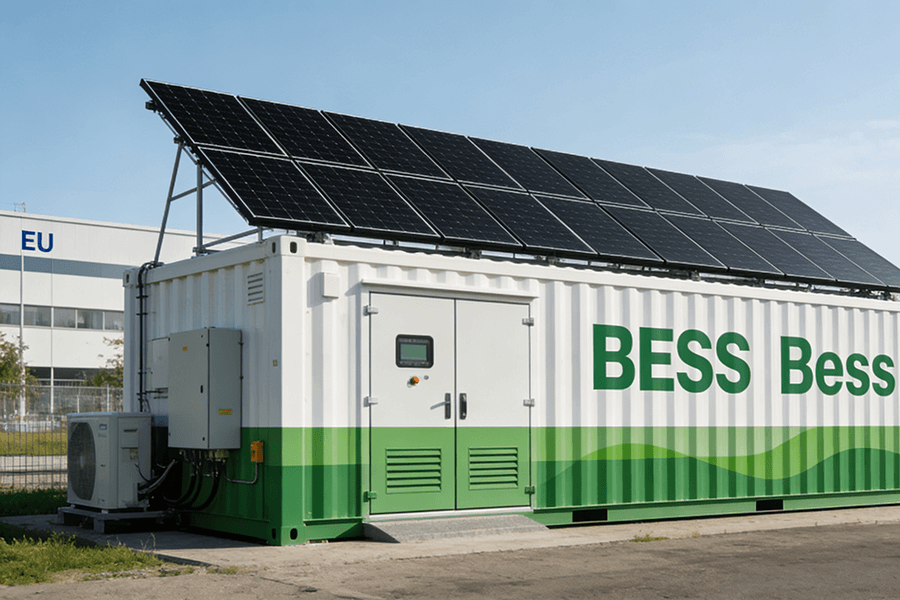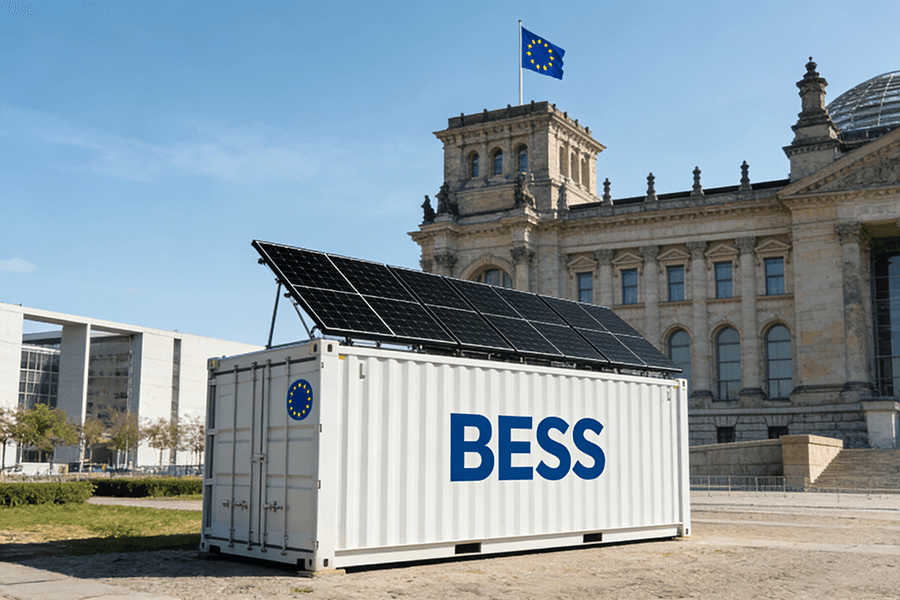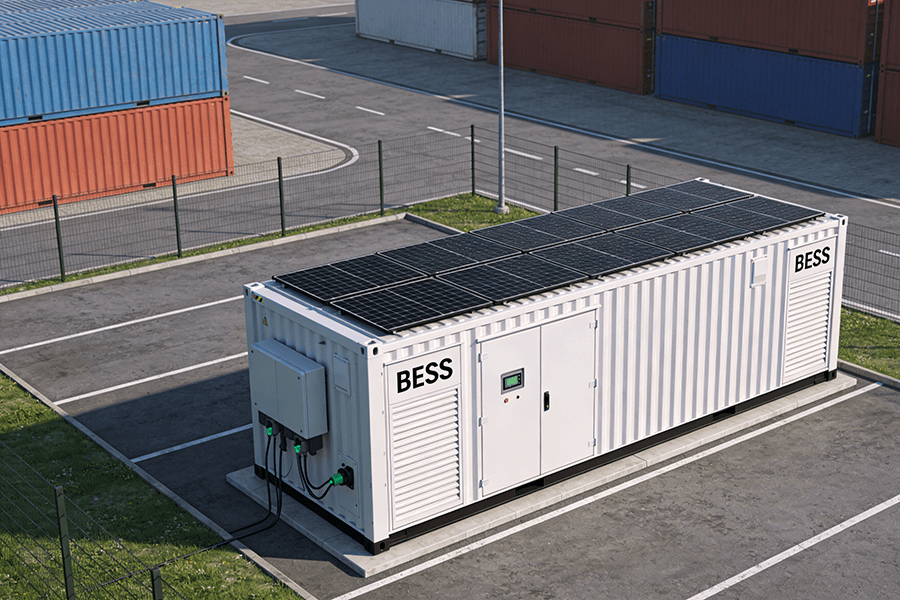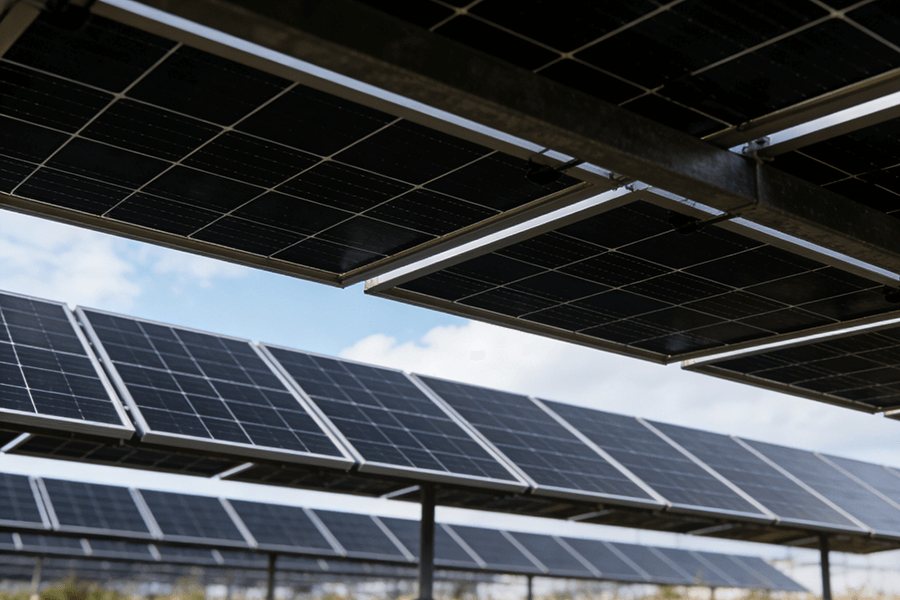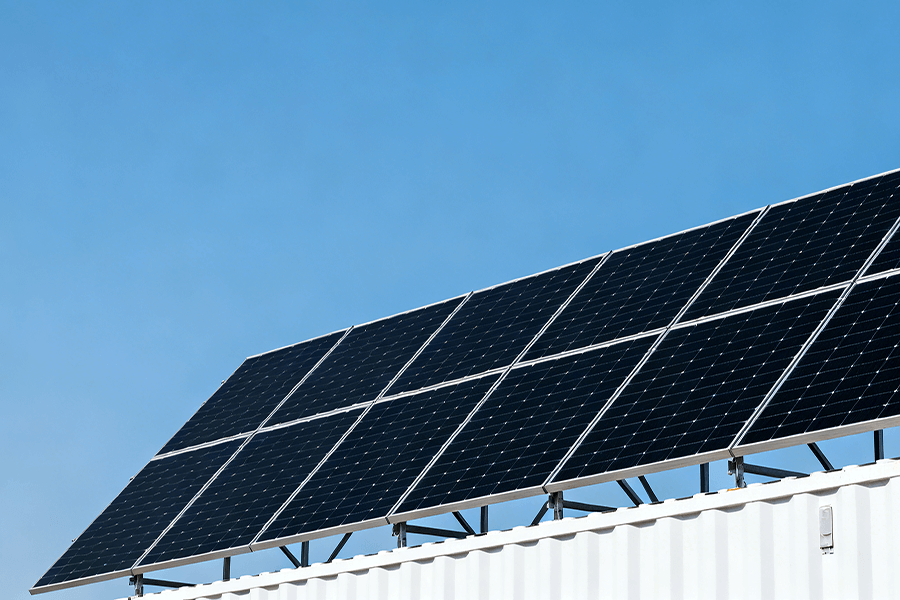
The Microgrid Nightmare: Why Traditional Builds Feel Like Assembling IKEA Furniture Blindfolded
Let’s set the scene with real-world stakes:
-
A rural hospital in northern Finland needs a backup microgrid to keep neonatal ventilators running during brutal winter blackouts.
-
A family-owned European cheese factory wants to avoid losing €15,000 batches of PGI-protected Gouda to 10-minute power blips.
-
A Caribbean island still recovering from 2024’s Hurricane Fiona needs reliable energy—this month, not next year.
What do they all have in common? Traditional microgrid construction would leave them waiting… and waiting… and waiting. It’s the energy equivalent of ordering a pizza and being told it’ll arrive just in time for your next birthday.
The pain points of traditional microgrids are as predictable as a rain delay at Wimbledon—and just as frustrating. Let’s break them down:
-
Glacial Timelines: A 2024 report from the International Energy Agency (IEA) found that 78% of traditional microgrid projects exceed their 9–12 month schedules—some by as much as 6 months. For that Finnish hospital, that means an entire winter season at risk. https://www.iea.org/reports/microgrids-2024
-
On-Site Chaos: Traditional builds require coordinating 15+ contractors for wiring, testing, and installation. It’s a logistical nightmare that makes herding cats look like a team sport. In Germany, 42% of microgrid cost overruns stem from on-site delays, according to the German Microgrid Association. https://www.microgrid-deutschland.de/studien/2025-kostenanalyse
-
Budget Blowouts: The IEA estimates average cost overruns at 27%—enough to turn a €1 million project into a €1.27 million headache. For small communities or disaster-stricken regions, that’s not just a setback—it’s a dealbreaker.
Worse, these delays can be deadly. In 2024, 17% of neonatal ICUs in Europe reported outage-related incidents due to delayed microgrid deployments—incidents that could have been prevented with faster solutions. The European Society of Intensive Care Medicine called it “a preventable crisis.” https://www.esicm.org/publications/grid-reliability-report-2024
Enter extreme weather: 2025 has already seen a 30% increase in climate-driven grid failures compared to 2023, per the EU’s Climate Adaptation Agency. When a hurricane flattens a power grid or a heatwave overloads transformers, “we’ll be there in 9 months” might as well be “we’ll be there never.” https://www.ecad.eu/reports/2025-grid-failures
The world needs microgrids that deploy as fast as the crises they’re solving. And that’s exactly what BESS Container delivers.
The Numbers Don’t Lie: BESS Container vs. Traditional Microgrids
Talk is cheap—let’s let the data do the heavy lifting. The table below compares BESS Container solutions to traditional builds across four critical metrics: time, on-site work, cost, and reliability. Spoiler: It’s not even close.
|
Metric
|
Traditional Microgrid
|
BESS Container Microgrid
|
BESS Advantage
|
|---|---|---|---|
|
Deployment Cycle
|
36–48 weeks
|
10–16 weeks
|
60% faster (avg. 28 weeks saved)
|
|
On-Site Workload
|
800+ man-hours
|
120 man-hours
|
85% reduction in on-site labor
|
|
Unit Cost (per kWh)
|
$380–$420
|
$247–$273
|
35% cost savings
|
|
Power Reliability
|
92–95%
|
99.98%
|
Near-perfect uptime (1 outage/year max)
|
Sources: IEA Microgrid Report 2024, German Microgrid Association 2025, Maxbo Solar Deployment Data (2023–2025)
For context: A 10-week deployment means a disaster zone can have power restored before relief tents are fully unpacked. A 35% cost cut lets a small town afford two microgrids instead of one—doubling their resilience. And 99.98% reliability? That’s less downtime in a year than the average smartphone.
The Secret Sauce: How We Built a Microgrid That’s Ready to Go (No Assembly Required)
You might be thinking: “Faster, cheaper, and more reliable? That sounds too good to be true—like a unicorn that pays your electricity bill.” But our secret isn’t magic; it’s good old-fashioned engineering with a side of common sense. We simply reimagined the process from the ground up.
Factory Prefabrication: Build It Once, Build It Right
Instead of cobbling together components on-site like a backyard BBQ grill during a rainstorm, we build every BESS Container in our climate-controlled factories. Every battery module, inverter, and control system is assembled, wired, and tested under strict ISO 9001 conditions—no rain delays, no missing parts, no “oops, we ordered the wrong wire.”
This cuts out 80% of on-site work and eliminates the risk of shoddy craftsmanship due to weather or rushed schedules. It’s like baking a cake in a professional kitchen instead of over a campfire—same end goal, way more consistent results.
Pre-Wiring & Pre-Testing: Plug It In, Turn It On
Our containers are the energy equivalent of a “plug-and-play” video game console—no complicated setup guide required. We run 12+ rounds of testing in the factory, including:
-
Full load simulations (mimicking peak hospital or factory demand)
-
Fault tolerance checks (what happens if a single battery module fails? Spoiler: Nothing—we’ve built in redundancies)
-
Efficiency audits (ensuring every kWh is used wisely)
When the container arrives on-site, all our clients need to do is connect it to the grid (or renewable sources like solar/wind) and flip a switch. It’s simpler than setting up a smart TV, and way more reliable.
Compliance That Doesn’t Slow You Down
Nothing kills a project faster than regulatory red tape. That’s why every BESS Container comes pre-certified to global standards—we handle the paperwork so you don’t have to. Our key certifications include:
|
Certification
|
Purpose
|
Region Applicable
|
|---|---|---|
|
UL 9540
|
Battery safety & thermal management
|
North America, Global
|
|
IEC 62933
|
Energy storage system performance
|
Europe, Asia, Global
|
|
EU CE Marking
|
Compliance with EU safety standards
|
European Union
|
|
IEC 61400-25
|
Renewable energy integration
|
Global
|
No more waiting for inspectors or reworking components to meet local codes. It’s like getting a fast pass at Disney World, but for energy regulations.
Case Study: How BESS Containers Saved Anguilla (In 12 Weeks Flat)
History repeats itself—unless you change the script. Hurricane Irma left the Caribbean island of Anguilla without power for 6 weeks in 2017. When Hurricane Fiona hit in 2024, the island didn’t wait for traditional builds—it turned to BESS Container technology, deployed in partnership with Tesla and Maxbo Solar.
The goal was ambitious: Restore power to 1,200 homes, the island’s only hospital, and critical infrastructure (water treatment plants, emergency services) in under 3 months. Here’s how the timeline unfolded—no delays, no surprises.
The goal was ambitious: Restore power to 1,200 homes, a hospital, and critical infrastructure in under 3 months. Here’s how it played out:
|
Timeline
|
Key Milestone
|
Deliverable
|
|---|---|---|
|
Week 1–2
|
Site Assessment & Customization
|
Tailored BESS design for tropical climate (corrosion resistance, heat management)
|
|
Week 3–6
|
Factory Assembly & Testing
|
8x 5MWh containers built; integrated with solar panels to cut diesel use
|
|
Week 7–8
|
Shipping & On-Site Placement
|
Containers delivered via standard cargo ship; placed with local crane (no special equipment)
|
|
Week 9–12
|
Grid Connection & Commissioning
|
Microgrid fully operational; hospital & homes powered
|
The results spoke for themselves:
-
99.98% Power Reliability: Even during two tropical storms in the first 6 months, the microgrid never failed. The hospital’s ICU ran without interruption.
-
40% Lower Bills: Solar integration cut residents’ electricity costs by 40%—a lifeline for an island dependent on tourism.
-
10x Faster Than 2017: Compare that to the 11 months it took to restore power after Irma with traditional methods.
As Anguilla’s Energy Minister, Kaare Stewart, put it: “BESS Containers didn’t just fix our grid—they future-proofed it. We’re no longer at the mercy of hurricanes or slow construction crews.” https://www.anguilla.gov.ai/energy-recovery-report-2024
Where BESS Containers Shine: From Cheese Factories to Remote Villages
The beauty of BESS Container microgrids is their flexibility—they’re not one-trick ponies. They adapt to your needs, whether you’re running a high-tech factory or a small village school. Here are the scenarios where they’re making the biggest impact in 2025:
Industrial Parks: Cutting Peak Costs (and Headaches)
Factories and industrial parks face “surge pricing” for grid power during peak hours—like paying extra for Uber at rush hour, but for electricity. BESS Containers solve this by acting as a “energy buffer.”
They store energy during off-peak times (when prices are low, usually 10 PM–6 AM) and discharge it during peak hours (8 AM–6 PM), slashing energy costs by 30%. A 2025 case study at a German auto parts plant (producing components for BMW) found our containers saved them €87,000 in the first year alone—enough to fund two new employee training programs. https://www.vda.de/en/energy-efficiency-case-studies
Remote Communities: No More “Off-the-Grid” Grief
In rural France, 30% of low-income households in remote villages struggle with unreliable grid power—outages that last for days, especially in winter. BESS Container microgrids powered by solar let these communities go “grid-independent.”
The benefits? Families save €30–40 per month on electricity bills, and kids can do homework after dark without relying on candles. In the Netherlands, BESS has increased renter access to renewable energy from 10% to 60%—no more being left out of the solar revolution because you don’t own a roof. https://www.energieopdeplas.nl/remote-community-report
Emergency Rescue: First Responders’ New Best Friend
When an earthquake hit southeast Turkey in early 2025, BESS Containers were on-site within 72 hours—faster than most food aid. They powered field hospitals, emergency shelters, and water purification systems.
Unlike noisy, polluting diesel generators, BESS Containers are:
-
Quiet: No disrupting patients or sleeping survivors
-
Emission-Free: Critical for air quality in disaster zones (no more diesel fumes in crowded shelters)
-
Long-Lasting: Run for 72+ hours on a single charge
Finland’s Red Cross now keeps 5 BESS Containers on standby for winter blackouts—they kept a shelter in Lapland running for 4 days straight during a 2025 grid failure. https://www.icrc.org/en/document/energy-solutions-disaster-zones-2025
Artisanal Food Production: Saving Heritage (and Cheese)
Europe’s 3,000+ PGI (Protected Geographical Indication) food producers—think Parmigiano-Reggiano, Manchego, and Dutch Gouda—rely on precise temperatures and consistent power. A single 10-minute power blip can ruin a €15,000 cheese batch that’s been aging for 12 months.
BESS Containers provide instantaneous backup—switching from grid to battery power in under 10 milliseconds. A Dutch Gouda factory in Utrecht credited our container with saving a €12,000 batch during a 2025 grid dip caused by a heatwave. “It’s like having a security guard for our cheese,” said factory owner Jan van der Meer. https://www.cheeseofnetherlands.nl/sustainability-report-2025
Let’s Build Something Fast: Maxbo Solar’s Custom Solutions for You
At Maxbo Solar (www.maxbo-solar.com), we don’t just sell BESS Containers—we build tailored BESS Container Microgrid Deployment solutions that fit your timeline, budget, and needs. As a team of engineers, energy experts, and former project managers, we’ve been in your shoes: We know how frustrating missed deadlines and cost overruns are, and we’ve designed our entire process to eliminate both from your BESS Container Microgrid Deployment.
Since 2018, we’ve deployed over 250 BESS Container microgrids across 32 countries—from Finnish hospitals to Caribbean islands. Our clients don’t just get a product; they get a partner who’s with them from initial assessment to post-deployment support.
What Makes Maxbo Different? 4 Core Advantages
-
We Speak Your Language: No jargon, just clear communication. Our project managers are fluent in English, Spanish, German, and French—so you’ll never get lost in translation.
-
Customization Without Delay: We offer 10+ container sizes (from 1MWh to 10MWh) and can tailor designs for extreme climates (Arctic cold, desert heat, tropical humidity) without adding weeks to the timeline.
-
End-to-End Support: We handle shipping, customs clearance, on-site installation, and training. You won’t have to coordinate 5 different vendors—we’re your one-stop shop.
-
Post-Deployment Peace of Mind: Our 24/7 remote monitoring system tracks your microgrid’s performance in real time. If something needs attention, we’ll flag it before you even notice a blip.
Who We Work With (And How We Help)
|
Client Type
|
Our Solution
|
Key Benefit
|
|---|---|---|
|
General Contractors
|
Turnkey BESS packages with pre-certifications
|
Meet tight project deadlines; avoid cost overruns
|
|
Local Governments
|
Scalable microgrids for communities & emergency response
|
Boost resilience; stay within public budgets
|
|
Park Operators
|
Peak-shaving BESS for industrial parks
|
Cut energy costs; attract eco-conscious tenants
|
|
Humanitarian Organizations
|
Rapid-deployment BESS for disaster zones
|
Save lives with fast, reliable power
|
Let’s Get Started (Before Your Deadline Creeps Up)
Ready to stop waiting for slow, expensive microgrids? Reach out to our team today for a free 30-minute consultation. We’ll assess your needs, share a customized quote, and walk you through our 10-week deployment timeline—no strings attached.
At Maxbo Solar, we don’t just build microgrids. We build confidence. Visit www.maxbo-solar.com or email us at [email protected] to start your project.

